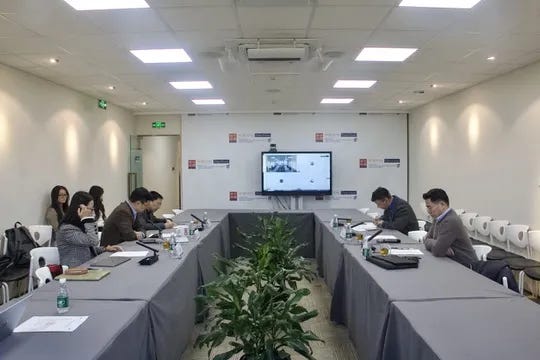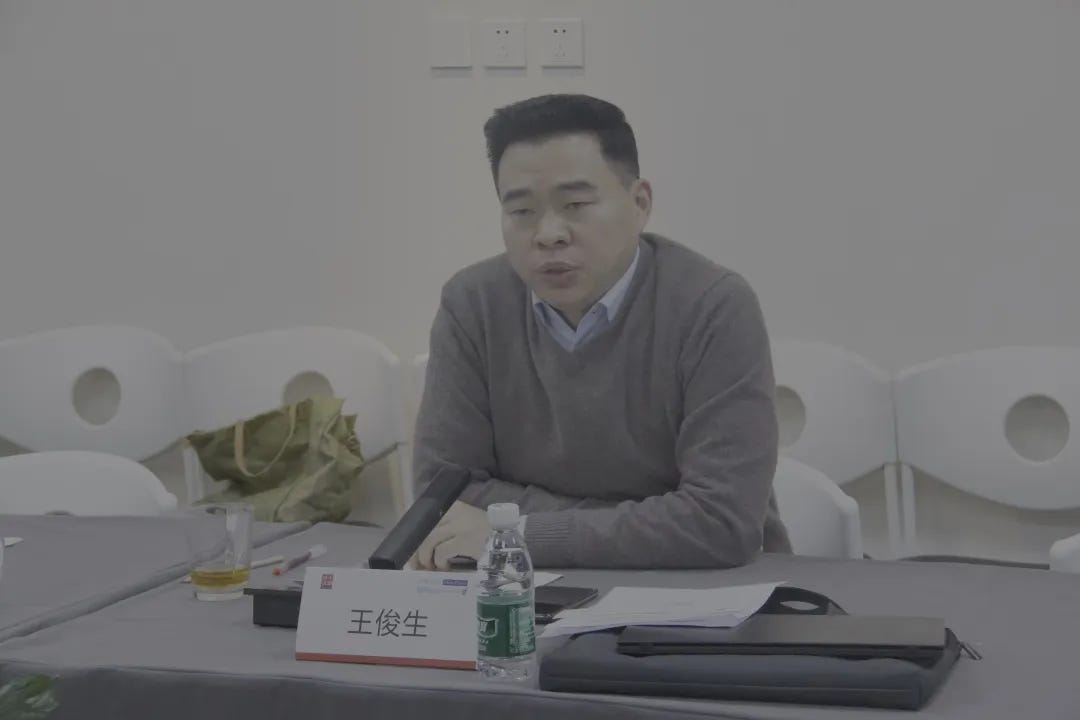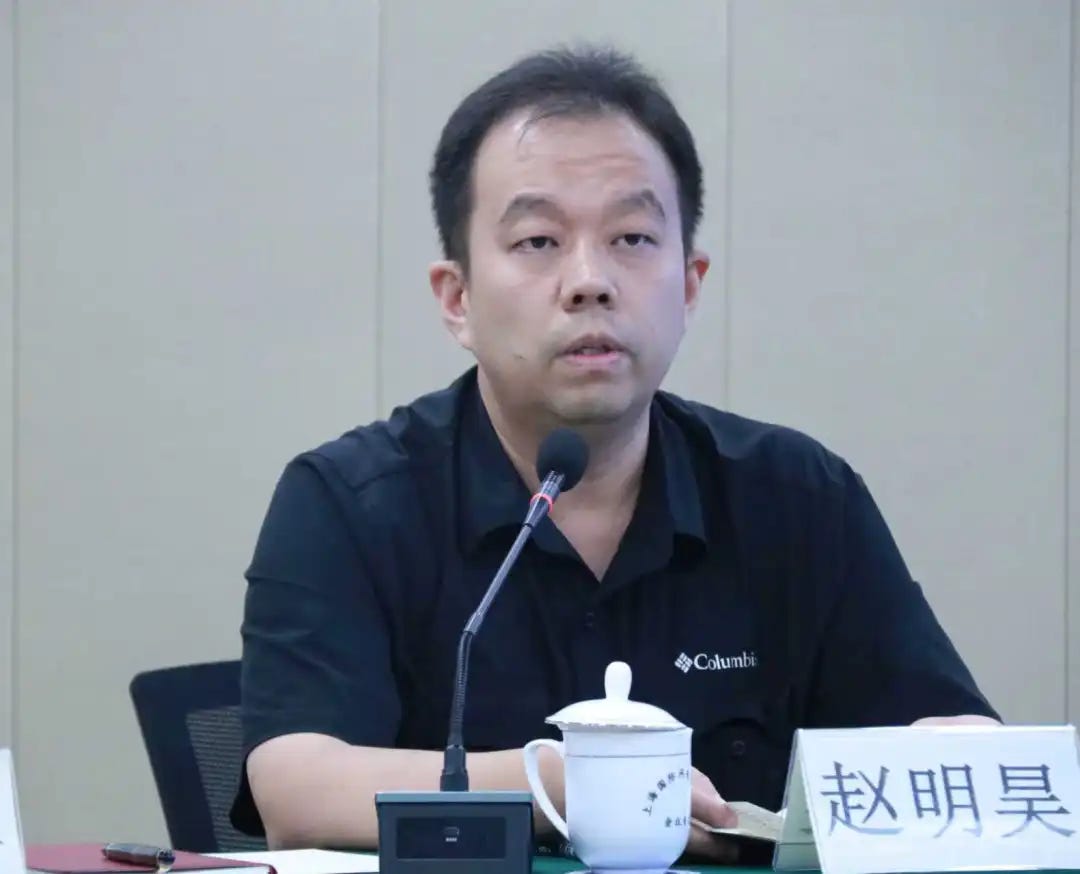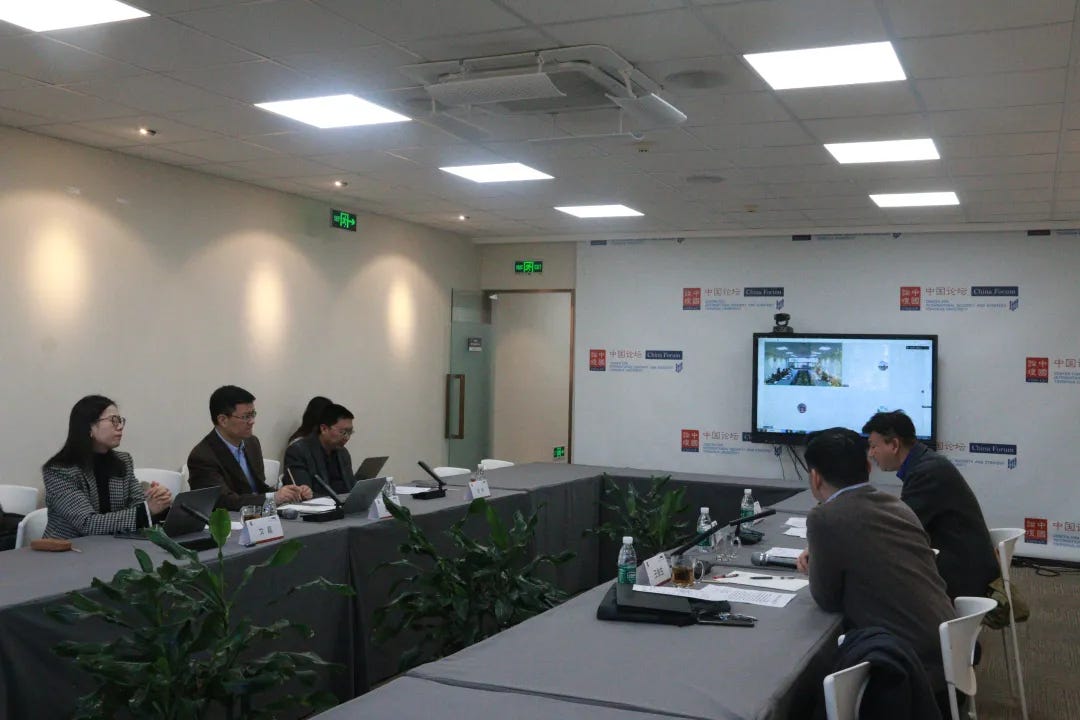Post APEC, Chinese scholars weigh limited easing in China–U.S. rivalry & Trump’s new G2 pitch
Analysts from Chinese universities and think tanks see managed competition, tariff truces, and rare earth leverage tempering rivalry in a "nationalist great-power relationship."
Hot on the heels of the latest phone call between President Xi Jinping and U.S. President Donald Trump, it is worth recalling that, in the period between their meeting in Busan and this renewed contact, Chinese analysts were already dissecting the trajectory of the relationship.
On 2 November, the Fifth session of the China Forum and China Review Think Tank (the Double C Forum), co-hosted by Tsinghua University’s Center for International Security and Strategy (CISS) and the China Review Think Tank Foundation, was held at Tsinghua University. Experts and scholars carried out in-depth analysis of the content of the talks between the Chinese and U.S. heads of state at the APEC Summit in Gyeongju, the significance of the meeting, the future direction of China-US relations and regional economic cooperation under the APEC framework, providing diverse perspectives for understanding current China-US interactions and the regional landscape.
Experts and scholars attending the Fifth session of the Double C Forum included:
Song Wei, Professor at the School of International Studies and Research Fellow at the National Academy of Development and Strategy, Renmin University of China
Li Nan, Deputy Director of American Strategies Division, Institute of American Studies, Chinese Academy of Social Sciences
Wang Junsheng, Research Fellow at the National Institute of International Strategy, Chinese Academy of Social Sciences
Zhao Minghao, Professor at the Institute of International Studies and Deputy Director of the Center for American Studies, Fudan University
Wen Jing, Postdoctoral Researcher at CISS and Director of Communications at China Forum
Guo Zhijun, Director of the International Department at China Review News Agency and Research Fellow at China Review Think Tank, who participated online.
The forum was chaired by Da Wei, CISS Director. The following forum report was released on the official CISS WeChat blog on 11 November - again, it was well before the latest phone call between Trump and Xi yesterday/Monday/November 24.
双C论坛:APEC峰会后中美关系新观察
China Forum-China Review Think Tank: New Observations on China-U.S. Relations after the APEC Summit
Song Wei, Professor at the School of International Studies and Research Fellow at the National Academy of Development and Strategy, Renmin University of China, noted that the talks between the Chinese and U.S. heads of state at this APEC Summit produced concrete results on tariff adjustments, fentanyl control, and soybean purchases. These outcomes effectively eased recent tensions between China and the United States and are of considerable significance.
Responding to the view among some scholars that these agreements merely amount to “creating bargaining chips,” he argued that these issues were already potential bargaining chips between the two sides. By confirming during the talks that these cards would not be played, both sides can help avoid vicious competition and unnecessary losses.
In his assessment, the fundamental reason consensus could be reached lies in the mutual dependence and shared interests between China and the United States in the economic and other domains. At the same time, in terms of political optics, both governments can use the outcomes of the talks to showcase diplomatic achievements in their respective domestic contexts.
Song Wei stressed that the statements made by the two leaders merit close attention. The Chinese side said that China and the United States should be “partners and friends,” and that “China and the United States can jointly shoulder our responsibility as major countries.” The U.S. side echoed this sentiment and expressed the hope that China would provide assistance in resolving the Ukraine issue.
Regarding Donald Trump’s renewed mention of the “G2” concept, Song Wei argued that China should remain cautious. In his view, the concept must be assessed comprehensively, including whether China’s overall strength is commensurate with such a role, the pressure that would come from taking on additional responsibilities, and the likely reactions of other countries.
On the future trajectory of China-U.S. relations, Song Wei judged that they will remain in a state of “fragile stability.” Nuclear deterrence and mutual economic interdependence provide an important foundation for basic stability in the bilateral relationship, yet structural contradictions persist, including trade and economic frictions, competition over international status, and ideological differences. China and the United States should seize the opportunity of the APEC Summit to be held in Shenzhen in 2026 to prioritize progress on building an Asia-Pacific Free Trade Area. He also proposed that the two sides explore room for cooperation in areas such as climate change, the restructuring of trade rules, and crisis management in the Taiwan Strait and the South China Sea, so as to achieve limited cooperation based on common interests, rather than remaining only at the level of drawing “red lines” and setting “guardrails.”
Li Nan, Deputy Director of American Strategies Division at the Institute of American Studies, Chinese Academy of Social Sciences, argued that China and the United States have entered a phase of “managed competition,” in which both sides make limited concessions to buy time and prepare for future bargaining.
He outlined two possible trajectories for China–U.S. relations. Under the first scenario, the period leading up to the U.S. midterm elections remains relatively calm, with the two countries creating a favourable atmosphere by resuming agricultural purchases, maintaining rare-earth exports, and shelving further tariff hikes. Even if small-scale disputes occur, such an environment could still inject confidence into the global economy. Under the second scenario, the United States restarts tariff restrictions by invoking issues such as fentanyl and agricultural commitments, prompting countermeasures from China and renewed diplomatic tensions, thereby exacerbating turbulence in the international trading order.
Li Nan noted that the decision-making system around Donald Trump is highly chaotic, with bureaucratic departments competing to demonstrate loyalty, which could trigger shocks in China–U.S. relations. The cross-departmental coordination of the Trump administration warrants close attention.
Li Nan went on to note that the China–U.S. tariff war and China’s countermeasures on rare earths have sent a warning to other countries. Positioned between the world’s two largest economies, they face real difficulties in safeguarding their own economic development and the growth of their enterprises, while the China–U.S. game has undermined the stability of global supply chains and pricing systems.
The marked improvement in relations between the Republic of Korea and Japan is the most obvious example. In the context of China–U.S. competition, historical issues between the two countries may no longer be the main obstacle in their bilateral ties. Instead, both sides are prioritizing economic cooperation, strengthening complementarities and investing in each other, which reflects how countries are making independent choices based on their own interests.
In addition, Li Nan observed that Trump’s push for cooperation on critical minerals and tariff reductions in Southeast Asia broadly follows the same direction as China’s economic engagement in the region, with ideology playing a smaller role and greater emphasis placed on cooperation in economy, trade, investment, and supply chains. Looking ahead, China and the United States are likely to engage in more intense competition in Southeast Asia and other “third pole” regions, and that countries facing economic uncertainty have a very practical need for the favourable policies put forward by China and the United States.
Wang Junsheng, Research Fellow at the National Institute of International Strategy of the Chinese Academy of Social Sciences, noted that the Gyeongju summit between the Chinese and U.S. heads of state drew wide attention and marked an initial achievement in restoring positive interaction between the two countries after Trump’s return to the White House. During his visit to the Republic of Korea, Trump treated the China–U.S. summit as the core item on his schedule. Both sides signalled a willingness to cooperate on regional and international issues and expressed support for summits hosted by the other, indicating a strong possibility that the two leaders will pay reciprocal visits next year.
In Wang’s view, there is a strong likelihood that China–U.S. relations will remain generally stable, as the key factors that could fundamentally alter the relationship’s trajectory have not yet emerged, even though a degree of fragility persists. This situation will increase the motivation of both the Democratic People’s Republic of Korea and the Republic of Korea to work with China, thereby consolidating China’s favourable position on Korean Peninsula issues. By contrast, there are clear limits to how far relations can improve between the Republic of Korea and the United States, between the Democratic People’s Republic of Korea and the United States, and between China and the Republic of Korea.
He also pointed out that in terms of regional economic cooperation, a moderate easing in China–U.S. relations has positive implications for China’s role as host of APEC next year. For example, it could help bring President Trump, who was unable to attend this year’s APEC Summit in Gyeongju, to China for next year’s APEC meeting, using the occasion to advance the Global Governance Initiative, project an open posture, and strengthen the China’s soft power.
Zhao Minghao, Professor at the Institute of International Studies and Deputy Director of the Center for American Studies, Fudan University, argued that although the China–U.S. summit in the Republic of Korea went through some difficulties, it was relatively successful in terms of outcomes. China–U.S. relations are entering a stage of “stability amid turbulence.” He cautioned that the “G2” concept raised by Trump should not be overstated, but noted that this wording nonetheless sends a positive signal that the Trump administration hopes to handle its China policy through “major-power coordination,” and that Trump also explicitly said that China and the United States should cooperate. Zhao Minghao stressed that, in the face of pressure from the United States during Trump’s second term, China’s strategy of “using calibrated confrontation to promote talks and foster stability” has produced results, and that this round of ceasefire and de-escalation has enabled both sides to gain a deeper understanding of each other’s resilience and concerns over interests.
Zhao pointed out that current China–U.S. interactions exhibit four main features. First, both sides place greater emphasis on their respective domestic policy goals and seek to become partners that help each other succeed and achieve shared prosperity. Second, the bilateral economic and trade teams are working to translate the consensus reached by the heads of state into concrete arrangements. Third, exchanges between China and the United States beyond the economic and trade sphere, such as in military security and diplomacy, may resume. Fourth, personal interaction between the heads of state plays a key role in shaping the direction of bilateral relations. He also noted that this summit represents only a “limited easing” of tensions: some sensitive issues were set aside, and deep differences remain on questions such as economic and trade relations and export controls.
He observed that China–U.S. interaction may still experience setbacks in the future, and that a pattern of “alternating confrontation and negotiation” has become the new normal in China–U.S. competition. Trump’s personality, with its strong focus on winning and profit, is difficult to change. Friction and contestation between China and the United States persist on issues related to the Taiwan Strait, the South China Sea, and Hong Kong, and the temporary shelving of these issues does not mean that the alarm has been lifted. Zhao concluded that the new “G2” put forward by Trump does not imply joint governance of the world by China and the United States, nor does it mean that U.S. policy toward China will replace cooperation with competition. Rather, it reflects the importance both countries attach to re-examining the relationship and to conducting more coordination and communication.
Da Wei, Director of CISS, described the summit between the Chinese and U.S. heads of state as an “inflection point.” He argued that, after an unprecedentedly intense round of exchanges, China–U.S. relations have entered a new phase of limited easing. Over the past few months, and indeed the past few years, the relationship has seen sharp tactical fluctuations, marked by roller-coaster swings, yet after each episode it has returned to a relatively stable state, demonstrating the internal resilience of the bilateral relationship.
He pointed out that the basic nature of China–US relations is undergoing a profound transformation. It is evolving from an unequal dependence between a developed country and a developing country within a globalized system into a relationship between two “nationalist major powers” that are more independent and more equal. In the economic sphere, both sides have shown an ability to disrupt the other. For example, the United States cannot quickly free itself from dependence on Chinese rare earths, while the U.S. high-tech export ban has posed challenges to China’s economic development.
Da Wei suggested that China–U.S. relations are facing a “bottom-up” problem within the United States, namely that taking a tough line on China has become “politically correct” in Washington, and government departments display a certain “autopilot” tendency: even after the two heads of state reach consensus, agencies may still introduce negative policies within their respective remits. This needs to be managed in a “top-down” manner through frequent high-level exchanges. He noted that multiple head-of-state interactions can be expected between the two countries next year. In dealing with the Trump administration, it is essential to seize opportunities while managing expectations, and to encourage new thinking, new discussions, and new narratives on China–U.S. relations within the United States.
Da Wei argued that, at present, neighbouring countries attach greater importance to China and that the overall regional environment is favourable. On the Taiwan question, healthy interaction between China and the United States will also narrow the room for “Taiwan independence” forces. If the Democratic Progressive Party authorities persist in pursuing “independence,” they may ultimately become a piece to be sacrificed in China–U.S. relations. Greater stability in China–U.S. ties will help people on the Taiwan island see more clearly that “Taiwan independence” is a dead end and will strengthen voices in favour of reunification and the peaceful development of cross-Strait relations.
During the free discussion session, scholars exchanged views on the drivers of China–U.S. relations, the impact of U.S. domestic politics, and the situation on the Korean Peninsula. Song Wei argued that although Trump’s policies are flexible, the decision at the Busan meeting to sidestep the Taiwan question and focus on economic and trade issues remains constrained by structural factors. He cautioned against placing excessive expectations on Trump as an individual and stressed the need to watch the U.S. midterm elections. If the Republican Party suffers setbacks, Trump’s willingness to improve relations with China may be curtailed and the risk of conflict could rise.
Da Wei agreed on the decisive role of structural factors and suggested that Trump’s policies may be balanced by the establishment. At the same time, he judged that the shift in U.S. domestic politics toward nationalism will be a long-term trend: over the next decade, it will be difficult to return to a traditional internationalist line, and even a Democratic administration would be more focused on domestic affairs.
Li Nan added that conservative Republicans in the United States regard Trump’s three years in office as a potential window of opportunity for China–U.S. relations, a window which, if seized, could remake the United States. If the establishment returns in the future, China–U.S. relations may deteriorate further. China should seize the present and work to shape a new trajectory for the relationship.
Wang Junsheng focused on regional cooperation under the APEC framework. He emphasized that limited stability in China–U.S. relations not only helps ease tensions on the Korean Peninsula, but also curbs speculative behavior by neighboring countries and promotes regional cooperation. China can make use of the shift in its diplomatic focus toward its neighborhood to take the initiative in shaping a more favorable environment and even indirectly influence U.S. policy.
With regard to the situation on the Korean Peninsula, Li Nan and Wang Junsheng analysed the reasons why Trump did not meet Kim Jong Un. Li Nan argued that the Democratic People’s Republic of Korea currently lacks motivation to engage in dialogue with the United States. On the one hand, the economic and strategic support it needs can already be obtained from Russia and China. On the other hand, it is actively advancing a new Cold War-style diplomatic framework and is busy preparing for the Ninth Congress of the Korean Workers’ Party and for Kim Jong Un’s visit to Russia, leaving little inclination to engage with the United States at this stage.
Wang Junsheng pointed out that the core demand of the Democratic People’s Republic of Korea at present is to secure de facto U.S. acceptance of its status as a nuclear-armed state, while the U.S. side still insists on denuclearization, making the gap between the two sides difficult to bridge. In the longer term, however, dialogue between the United States and the Democratic People’s Republic of Korea remains possible, and that a new window may emerge in the next three years.
On China–Republic of Korea relations, Wang Junsheng noted that although conditions are not yet fully in place for a state visit to the ROK by Chinese leaders in the near term, China is taking the initiative from the standpoint of overall regional stability and is sending signals of goodwill to Seoul. Despite constraints arising from nationalist sentiment within the ROK and pressure from the United States, China–ROK relations are expected to gradually improve against the backdrop of U.S. pressure on the ROK and growing demand there for greater economic autonomy. The two sides still need to further consolidate strategic mutual trust, and the pace of cooperation should not be rushed.
Li Nan said that during the summit between the heads of state of China and the Republic of Korea, the Chinese side focused on practical bilateral issues, which can help advance economic and trade complementarity and improve public perceptions of China in the Republic of Korea, and is intended to support the policies of the Lee Jae-myung administration. He noted that the Republic of Korea, as a typical “nationalist state,” faces dual pressure from the long-arm jurisdiction and industrial policies of both China and the United States. Its economy is highly dependent on the two countries, and its room for independent decision-making is shrinking. If its industries fully follow U.S.-driven adjustment strategies, the Republic of Korea’s industrial system will lose autonomy. This dilemma is also a microcosm of the situation facing many countries and the U.S. allies, as all must navigate a difficult balance between “choosing sides” and “pursuing strategic autonomy.”












